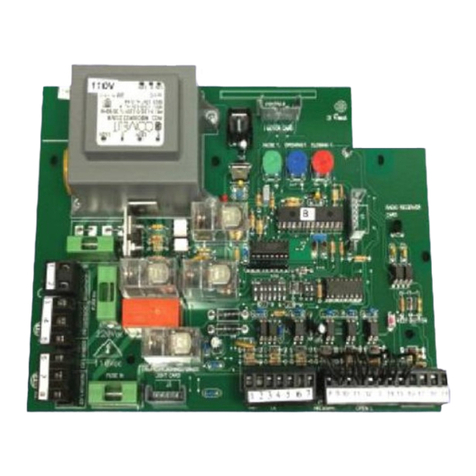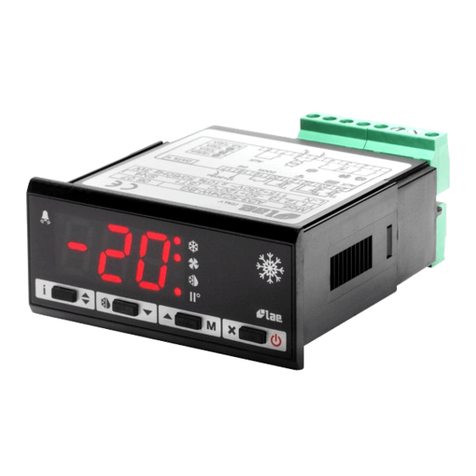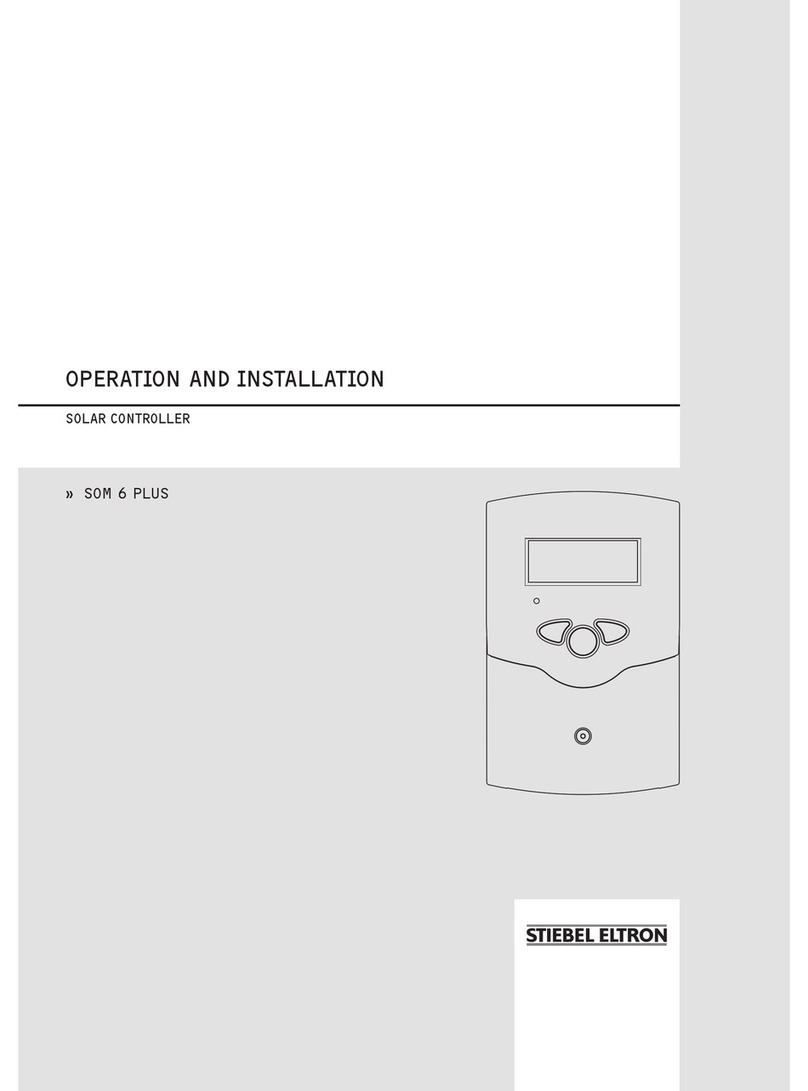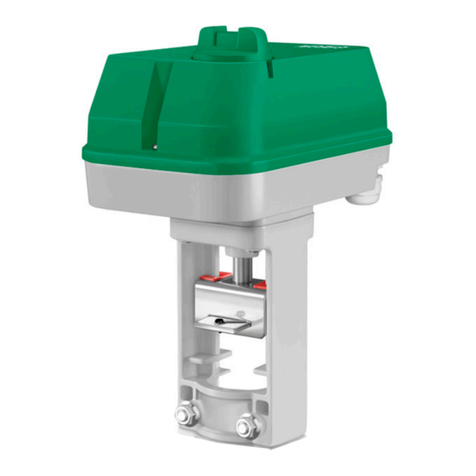SENSORWORX SWX-950 Installation instructions

WIRELESS POWER PACK
LOAD CONTROLLER
INSTALLATION & OPERATION INSTRUCTIONS
CATALOG NUMBERS DESCRIPTIONS
SWX-950 POWER PACK LOAD CONTROLLER
SWX-950-D2 POWER PACK LOAD CONTROLLER W/ 0-10V
DIMMING
SWX-950-AX POWER PACK LOAD CONTROLLER W/ AUXILIARY
LOW VOLTAGE CONTROL
SWX-950-AX-D2 POWER PACK LOAD CONTROLLER W/ 0-10V
DIMMING & AUXILIARY LOW VOLTAGE CONTROL
SWX-999 LOW VOLTAGE WIRING CHAMBER
SPECIFICATIONS
ELECTRICAL
OPERATING VOLTAGE
120/277 VAC,
Single Phase, 50/60 Hz
CLASS 2 OUTPUT RATINGS
18 VDC, 150 mA (-AX version)
RELAY CURRENT REQS
55 mA
LOAD RATINGS
20A @ 120 VAC -
General Purpose Plug Load
20A @ 120/277 VAC -
General Purpose, Tungsten, Magnetic
Ballast
16A @ 120/277 VAC -
Electronic Ballast, LED Driver
DC LOAD RATINGS
20A @ 28 VDC (MAX)
1A @ 5 VDC (MIN)
DIMMING LOAD
(Models with -D2 option only)
50mA, (0-10 VDC ballasts or drivers
compliant with IEC 60929 Annex E.2)
MOTOR LOAD
1 HP
ESD IMMUNITY
Tested to withstand electrostatic
discharge without damage or memory
loss
ENVIRONMENTAL
OPERATING TEMP
32°F to 122°F (0°C to 50°C)
RELATIVE HUMIDITY
0-95% Non-Condensing
Indoor Use Only
WIRELESS
RANGE
80’ line of site w/o obstruction
40’ with obstruction (walls/oors)
FREQUENCY
915 MHz ISM Band
WIRELESS LINKING
Simple 3 sec. Push Button Process
SECURITY
All Wireless Data is Encrypted
PHYSICAL
SIZE
3.00” H x 2.25” W x 1.88” D
(7.62 cm x 5.72 cm x 4.78 cm)
WEIGHT
6.00 oz.
COLOR
Blue
MOUNTING
1/2” Knockout
RELAY TEST BUTTON
LED STATUS INDICATOR
Bi-color White & Blue
OPERATION
OPERATING MODES
Occupancy & Vacancy
Partial On/Off (-D option)
TIME DELAY OPTIONS
1, 5, 10, 15, 20, 30 min.
CODE COMPLIANCE
These power packs can be used to
meet ASHRAE 90.1, IECC, & Title 24
energy code requirements
FEATURES
à Wirelessly Links to Sensors & Wall
Stations
à Pairs in Seconds up to 50 Remote
Devices
à Switches Up to 20A Line Voltage
Loads
à Electronically Timed Switching
Ensures Long Relay Life
à Integrated Test/Programming Button
à Configurable Time Delays and
Operational Modes (e.g. Occupancy/
Vacancy)
à Optional 0-10V Dimming Output for
Partial On & Partial Off Operation
à Optional Low Voltage Sensor & Wall
Station Wired Connectivity
à Plenum Rated (UL 2043)
OVERVIEW
SENSORWORX wireless power pack controllers switch on/off power to a connected lighting
load as directed by wirelessly linked sensors and wall controls. Additionally, the unit’s
0-10V dimming option enables dimming control. This wireless power pack also has optional
auxiliary low voltage connections for achieving hybrid wired/wireless architectures.
The SENSORWORX wireless power pack is rated to switch fully loaded circuits and utilizes
a powerful microprocessor to optimize its switching timing, ensuring long relay life even
when controlling high-inrush LED lighting. As with all SENSORWORX products, these power
packs are easy to install and incorporate features which reduce contractor labor time. An
elongated chase nipple with snaps for quick installation and an optional snap-on low voltage
wire chamber make for a hassle free contractor experience. All SENSORWORX products are
proudly made in the USA.
BASIC OPERATION
A received wireless message indicating occupancy from one or more wirelessly linked
sensors will trigger the pack’s integrated relay to close. When congured for Vacancy
operation, an ON switch message is required from a wirelessly linked wall station to initially
trigger lights. Once closed, line voltage will ow through the relay and turn on the connected
lighting load. The wireless power pack maintains a master time delay that is reset every
time a linked sensor reports occupancy. Lights will be switched off once there hasn’t been an
occupancy message reported for the duration of the time delay.

POWER PACK LOW VOLTAGE WIRING CHAMBER [OPTIONAL]
PROVIDES 3 KNOCKOUTS
FOR CONDUIT CONNECTIONS
CHASE NIPPLE HAS SNAPS THAT ENABLE QUICK
INSTALLATION THROUGH ANY 1/2” KNOCKOUT
TEST/PROGRAMMING BUTTON
LED INDICATOR
SNAPS DIRECTLY
TO MAIN HOUSING
WIRING CHAMBER *LOCK NUT SNAP-ON COVER
*CONNECT LOW VOLTAGE CHAMBER TO CONDUIT BEFORE
CONNECTING TO POWER PACK. CONDUIT SHOULD BE
APPROPRIATELY SUPPORTED BY OTHER MEANS AND
NOT USE THE LOW VOLTAGE CHAMBER FOR SUPPORT
INSTALLATION INSTRUCTIONS
MOUNTING
INSTRUCTIONS
Power Packs are designed to
attach to electrical enclosures
with 1/2” knockouts. Do not mount
unit inside a metal junction box.
INSTALLATION NOTES
1For supply connections, use
14 AWG (90°C) or larger wires.
Wire all circuits exiting chase
nipple as Class 1 circuits.
2Suitable for plenum use.
3Risk of Electric Shock - More
than one disconnect switch may
be required to de-engergize the
equipment before servicing.
WARNING: TURN POWER OFF AT THE CIRCUIT BREAKER BEFORE WIRING
BLU
YEL
BLK
BLU
WHT
N
277V
120V
OR
* CAP UNUSED BLACK OR YELLOW WIRE
*
*
LOAD
120V/
277V
SWX-950
WIRELESS
POWER
PACK
+
BLK
COMMON
0-10V DIMMING
OUTPUT
VIO
BLU
YEL
BLK
BLU
WHT
N
277V
120V
OR
* CAP UNUSED BLACK OR YELLOW WIRE
*
*
DIMMING LOAD
120V/
277V
SWX-950
WIRELESS
POWER
PACK
+-
WIRING
MODEL #: SWX-950
MODEL #: SWX-950-AX
MODEL #: SWX-950-D2
YEL
BRN
SWITCH OUTPUT
RED
BLK
BRN
RED
RED
BLK
BLK
WHT WHT
CONTROL INPUT
**
COMMON
+VDC
SWITCH INPUT
RELAY STATUS
SWX
LOW VOLTAGE
SENSOR
SWX-801
SWITCH
YEL
RELAY STATUS INPUT
BLU
YEL
BLK
BLU
WHT
N
277V
120V 120V/
277V
OR
LOAD
CLASS 1
WIRING
CLASS 2
WIRING
*CAP UNUSED BLACK OR YELLOW WIRE
*
*
SWX-950-AX
HYBRID
WIRELESS
POWER PACK
** IF NO SENSORS ARE WIRED
OR WIRELESSLY LINKED, CONNECT
WHITE WIRE TO RED.

RED
VIO
GRY
+
0-10 VDC DIMMING OUTPUT
-
BRN
BLK
RED
BLK
BLU
YEL
BLK
BLU
WHT
WHT
WHT
N
277V
120V
OR
CONTROL INPUT **
COMMON
+VDC OUTPUT
CLASS 1
WIRING
CLASS 2
WIRING
*
*
* CAP UNUSED BLACK OR YELLOW WIRE
BRN
RED
YEL
RELAY STATUS
SWITCH OUTPUT
BLK
SWITCH INPUT
RELAY STATUS
OUTPUT
YEL
+VDC INPUT
COMMON
COMMON
+VDC INPUT
OCCUPANCY OUTPUT
** IF NO SENSORS ARE WIRED
OR WIRELESSLY LINKED, CONNECT
WHITE WIRE TO RED.
LOW VOLTAGE SENSOR
(e.g. SWX-201-1)
SWX-801
LOW VOLTAGE SWITCH
SWX-950-AX-D2
HYBRID
WIRELESS/WIRED
DIMMING
POWER PACK
120V/
277V
0-10V DIMMABLE LOAD
MODEL #: SWX-950-AX-D2
SWX-950-AX series power packs can supply power to several occupancy sensors and additional secondary relay packs. Following the below formula ensures adequate power will be
available. Note the SWX-950-AX’s relay has already been factored into the formula.
[ (# of PIR SENSORS*) x2mA ] +[ (# of DUAL TECH SENSORS) x10mA ] +[ (# of SWX-910) x55mA ] <[ (# of SWX-950-AX) x90 mA]
PIR SENSORS OR
LOW VOLT. WALL SWITCHES
+
DUAL TECH SENSORS
+
SECONDARY PACKS
SWX910
=
TOTAL
POWER
REQUIRED <
POWER
SUPPLIED
BY ONE
SWX950AX
#POWER
REQUIRED #POWER
REQUIRED #POWER
REQUIRED
15 30mA + 0 0 + 0 0 = 30mA < 90mA
15 30mA + 0 0 + 1 55mA = 85mA < 90mA
0 0 + 9 90mA + 0 0 = 90mA < 90mA
7 14mA + 8 80mA + 0 0 = 94mA < 90mA
POWER PACK CAPACITY
*or low voltage wall switches
EXAMPLE COMBINATIONS
COMPATIBLE WIRELESS DEVICES
MODEL # DESCRIPTION WIRELESS TYPE POWER TYPE
SWX-201-B Small Motion 360° Sensor, PIR Transmit Battery
SWX-401-B Wide View Sensor, PIR Transmit Battery
SWX-402-B Long Range Hallway Sensor, PIR Transmit Battery
SWX-851-xx Wall Switch Load Controller, No Neutral Required, <xx = color> Transmit & Receive 120-277 VAC
SWX-852-B-xx Remote Switch (On/Off), <xx = color> Transmit Battery
SWX-854-B-xx Remote Dimming Switch (On/Off, Raise/Lower), <xx = color> Transmit Battery
SWX-950 Power Pack Load Controller, 20A Receive 120/277 VAC
SWX-950-D2 Power Pack Load Controller, 20A, 0-10V Dimming Receive 120/277 VAC
SWX-950-AX Hybrid Wireless/Wired Power Pack Load Controller, 20A Transmit & Receive 120/277 VAC
SWX-950-AX-D2 Hybrid Wireless/Wired Power Pack Load Controller, 20A, 0-10V Dimming Transmit & Receive 120/277 VAC
APPLICATIONS
The below chart lists the devices that can be used in a SENSORWORX wireless application. Note that sensors and remote switch & dimmer
devices are transmit only devices and therefore must be linked to a load controller for switching or dimming of lighting.

WIRELESS LINKING (PAIRING)
Linking a wireless power pack to a wireless sensor or remote wall station is quickly done via the following procedure:
Step 1. Enter pairing mode by holding down the power pack’s button for 3 seconds until the LED starts alternating white then blue, then release.
Step 2. At the sensor or remote wall station, hold down the programming button for 3 seconds until the LED starts alternating white then blue. Releasing will link the sensor with
any wireless power packs in pairing mode (see note 1 below).
Step 3. Repeat step 2 to link additional sensors or switches.
Step 4. When all devices have been linked, exit pairing mode on the power pack by pressing the button 1 time. Pairing will also be automatically closed after 15 minutes of no
new devices being linked.
Note 1: When in pairing mode, the alternating LED colors on the power pack will periodically pause and blink out the total number of linked devices. There will be no blinks during the
pause until the rst device is linked.
STEP 1
POWER PACK
STEP 2 & STEP 3
WIRELESS SENSORS & REMOTE SWITCHES
STEP 4
POWER PACK
HOLD
FOR 3 SEC
SWX-950
HOLD
FOR 3 SEC
SWX-950
PRESS ONCE
ADDITIONAL APPLICATION INFORMATION
à For areas such as stairwells, the SWX-950-D2 unit can be used to achieve Partial Off operation where lighting is at the full bright level when occupied and dropped to the 50% (level
is congurable) during unoccupied periods.
à Partial On operation can be achieved by the SWX-950-D2 unit. In this conguration 0-10V lighting is turned on to a congurable Partial On Level when triggered from an occupancy
sensor or switch. Lighting can then be adjusted to any level via a wirelessly linked SWX-854-B remote dimmer. Alternatively, if the ON button is pushed on a wirelessly linked
SWX-852-B or SWX-854-B remote switch, lighting will be stepped up to 100% (level is user congurable). Lighting can be turned off manually via an OFF switch press on either the
SWX-852-B, SWX-854-B wireless remote switch (or single button push on a SWX-851 switch controller).
à Congurable dimming parameters include Turn On / Partial On Level, Turn Off Scheme, Fade On/Fade Off Rates, and High/Low Dimming Trim Levels.
à A model SWX-801-xx wired momentary switch can be wired to a SWX-950-AX-D2 model power pack to trigger the 3 step sequence of operation (i.e. Partial On, Full On, Off ). Other
manufacturer’s switches may also be utilized.
à ASWX-950-AX or SWX-950-AX-D2 power pack wirelessly retransmit any switch signals received on its brown input wire (typically from a SWX-801 or SWX-803 momentary switch
or a low voltage wall switch sensor). To receive the retransmitted switch signals, a remote load controller (i.e. another SWX-950 power pack or SWX-851 wall switch controller) will
need to be linked to the transmitting power pack.
APPLICATIONS (CONT.)

CONFIGURATION SETTINGS
FUNCTION #2 OCCUPANCY TIME DELAY
Unlike wired occupancy sensor systems, the time frame between when occupancy was detected last and connected lights turning off is a setting that is maintained in the power pack load
controller and not the sensor itself. This arrangement enables the sensors to conserve battery life. See additional notes below for more information on wireless sensor communications to
a power pack.
SETTING # DESCRIPTION FUNCTION #
2 1 Min
3 5 Min
4 10 Min Default for all models
5 15 Min
6 20 Min
7 30 Min
CHANGING THE OCCUPANCY TIME DELAY
1Read through the above list and note the number of the desired setting (e.g. 4 = 10 minutes).
2Press and release the unit’s pushbutton 2 times, then wait 2 seconds.The White LED will blink back the number of the current setting (repeats 3x before exiting).
3Interrupt blink back by pressing the button the number times equal to the new desired setting (e.g. 5 = 15 minutes).
4The LED will blink back the new setting number as conrmation and will be saved after three conrmations. After the third conrmation sequence, a successful save will be indicated by
two sets of rapid White ashes. If the Blue LED rapid ashes twice, save was unsuccessful and process should be started over.
ADDITIONAL NOTES ON OCCUPANCY TIME DELAY
à By default, every ~60 seconds a sensor transmits whether or not occupancy was detected during the previous period.
à Referred to as the sensor’s “heartbeat”, this period can be reduced to ~30 seconds although this will decrease expected battery life.
à If a sensor transmitted “unoccupied” at its last heartbeat, any new occupancy detection event will be transmitted immediately.
à If a sensor transmitted “occupied” at its last heartbeat, new occupancy events will only be transmitted at the heartbeat interval, thus conserving battery life.
à The wirelessly linked wall switch load controller and/or power pack maintains a master time delay that is reset every time a linked sensor reports occupancy. Lights will be switched
off once all linked sensors have continously reported unoccupied for the duration of the time delay.
à If a power pack does not receive a heartbeat transmission from a linked sensor for 2 minutes it will consider itself occupied.
SWX-950 series power packs have many congurable functions depending on the specic model. All functions setting values can be accessed and changed by pressing the unit’s push-
button and observing the LEDs feedback. The functions common to all SWX-950 series power packs are listed rst below. Functions present in models with the dimming option (e.g.
SWX-950-D2) are listed next and the function(s) that are present with the hybrid wireless/wired option (e.g. SWX-950-AX) are listed last.
TESTING & TROUBLESHOOTING
TESTING CONNECTED LIGHTING
To test the unit’s control of connected lighting, press and release the push button (located next to LED) one time. Lights should toggle if the unit is operating and wired to lighting properly.
LED BLINKOUT BEHAVIOURS
LED BEHAVIOR DESCRIPTION NOTES/REMEDY
Continuous WHITE blinking “heartbeat” Normal operation
Repeating double BLUE ashing Power supply is overloaded.
1. Check for miswiring causing a short on the red low voltage wire.
2. Remove low voltage load from the red wire (i.e. connected sensors, secondary relay packs, or
switches) until the BLUE double ash stops.
Continuous BLUE ahsing Power present on both relay wires Check wiring going to the blue relay wires on the power pack. Specically, ensure there is not line
power present on both wires when power pack is disconnected.
Continuous WHITE, BLUE ashing Wireless Pairing Mode To exit pairing mode, press the button one time and release. The LED should return to continous
WHITE “heartbeat”
Continuous WHITE, BLUE ashing with
periodic WHITE blinking
Wireless Pairing Mode w’ Linked Device
Count
The number of periodic WHITE blinks reects the number of linked devices. To exit pairing mode,
press the button one time and release. The LED should return to continous WHITE “heartbeat”
NOTE: A 5-10 second time delay sensor test mode
can be initiated from a sensor in order to test
coverage. Test mode will expire after 10 minutes.

CONFIGURATION SETTINGS (CONT.)
SETTING # DESCRIPTION
3 Restore Factory Defaults
4 Restore Factory Defaults and Forget all Linked Devices
5 Enter Forget Mode (opposite of Pairing/Linking Mode
6 Forget All Linked Devices
7 Send a “Forget Me” Message
SETTING # MODE DESCRIPTION
2* Automatic On Occupancy Mode
DEFAULT SETTING
Lights come on automatically when an occupancy signal is received from wirelessly linked sensors (and/or wired sensors on -AX models). On
dimming models the lights will turn on to the TURN ON / PARTIAL ON LEVEL as specied in Function #4. Lights will turn off automatically if
the OCCUPANCY TIME DELAY expires prior to receiving another occupied signal from a sensor. Lights can also be switched off manually if
signaled from a wirelessly linked switch (and/or wired switch on -AX models).
3 Vacancy Mode
A switch signal from a linked wireless switch (and/or a wired switch on -AX models) is required to initially turn lights on. On dimming
models the lights will turn on to the TURN ON / PARTIAL ON LEVEL as specied in Function #4. Lights will turn off automatically if the
OCCUPANCY TIME DELAY (Function #2) expires prior to receiving another occupied signal from a sensor. Lights can also be switched off
manually if signaled from a wirelessly linked switch (and/or wired switch on -AX models).
4
Partial Off Occupancy Mode
(Auto-On to 100% when Occupied / 50%
Dim when Unoccupied)
Valid on dimming models only. Lights are on at full bright (HIGH TRIM LEVEL) when wirelessly linked sensors (and/or wired sensors on -AX
models) are signaling occupancy. When unoccupied, lights are dimmed to TURN ON / PARTIAL ON LEVEL) as specied in Function #4. Note
the default value is changed to 50% when the OPERATIONAL MODE is switched to Partial Off. If a wireless switch is linked (and/or a wired
switch on -AX models), lights can be manually dropped to TURN ON / PARTIAL ON LEVEL.
5 Automatic On (Disabled Off Switch)
Lights come on automatically when an occupancy signal is received from wirelessly linked sensors (and/or wired sensors on -AX models). On
dimming models the lights will turn on to the TURN ON / PARTIAL ON LEVEL as specied in Function #4. Lights will turn off automatically if
the OCCUPANCY TIME DELAY expires prior to receiving another occupied signal from a sensor. Lights cannot be switched off manually.
FUNCTION #3: OPERATIONAL MODES
Wireless power packs have several sequence of operation choices.
CHANGING THE OPERATIONAL MODE
1Read through the above list and note the number of the desired setting (e.g. 2 = Automatic On Occupancy Mode).
2Press and release the unit’s pushbutton 3 times, then wait 2 seconds.The White LED will blink back the number of the current setting (repeats 3x before exiting).
3Interrupt blink back by pressing the button the number times equal to the new desired setting (e.g. 3 = Vacancy Mode).
4The LED will blink back the new setting number as conrmation and will be saved after three conrmations. After the third conrmation sequence, a successful save will be indicated by
two sets of rapid White ashes. If the Blue LED rapid ashes twice, save was unsuccessful and process should be started over.
FUNCTION #8: RESTORE FACTORY DEFAULTS / FORGET LINKED DEVICES
To return a wireless power pack to its original factory default settings or to clear the unit’s list of linked wireless devices the following commands can be executed.
ENTERING A RESTORE FACTORY DEFAULTS OR FORGET LINKED DEVICES COMMAND
1Read through the above list and note the number of the desired command
2Press and release the unit’s pushbutton 8 times, then wait 2 seconds.The White LED will blink back 2 times, pause and repeat.
3Interrupt the blink back and press the pushbutton the number times equal to the desired command (e.g. 6 times to Forget all Linked Devices).
4The LED will ash back the command number as conrmation and will be executed after three conrmations. Two sets of rapid White ashes indicates success. If the Blue LED rapid
ashes twice, the command was unsuccessful and process should be started over.
ADDITIONAL NOTES ON OPERATIONAL MODES
à When in Automatic On Occupancy Mode (Setting #2) or Partial Off Occupancy Mode (Setting #4), if lights are manually switched off when there are still occupants in a
space (to show a presentation for example), the Automatic On operation will be disabled until the sensor time delay expires.
à In all modes, if the switch is pressed but no occupancy is ever sensed, the lights will come on for 1 minute and then shut off. For hybrid wired/wireless power packs, if there are no
sensors wirelessly linked or wired to the unit, tie the power pack’s white input wire to red (+VDC) .
à When in Vacancy (Manual On) Mode (Setting #3), there is a 15 second “grace” period after the sensor times out when the sensor will switch lights back on automatically. For
dimming models, the lights will return to the previous level. After 15 seconds the sensor will revert to vacancy (manual on) operation.

CONFIGURATION SETTINGS (CONT.)
FUNCTION #4 TURN ON / PARTIAL ON LEVEL)
The level the dimming output is set to upon initially turning on (requires unit be in a Partial
On operating mode).
SETTING # VALUES NOTES
2 100%
3 Last User Level (default) Invalid if Operational Mode set to Partial Off.
4 ~30%
Actual voltage value is calculated as the % of
voltage range between high and low trim levels.
Light output at each voltage level depends on
driver/ballast and luminaire.
5 ~40%*
6 ~50%
7 ~60%
8 ~70%
9 ~80%
FUNCTION #5 TURN OFF SCHEME
The actions of the power pack’s dimming output and relay when an unoccupied signal or
an off switch press is received.
SETTING # VALUES NOTES
2 Drop to Off* Dimming output drops to low trim and relay opens
(*default)
3 Fade to Off Dimming output fades to low trim and relay opens
4 Fade to 0V Dimming output fades to 0 volts (e.g. below a connected
driver’s electronic off level). Relay remains closed.
5 Fade to Low Trim Dimming output fades down to low trim level. Relay remains
closed.
6 Drop to Low Trim Dimming output drops down to low trim level. Relay remains
closed.
7 Drop to OV Dimming output drops to 0 volts (e.g. below a connected
driver’s electronic off level). Relay remains closed.
FUNCTION #6 HIGH TRIM
The voltage of the dimming output at the full bright level (step).
SETTING # VALUES NOTES
2 10 VDC (100%) * *default
Exact light output % at each voltage
level depends on driver/ballast and
luminaire.
3 9 VDC (90%)
4 8 VDC (80%)
5 7 VDC (70%)
6 6 VDC (60%)
7 5 VDC (50%)
FUNCTION #7 LOW TRIM
The voltage to which the dimming output will drop when the unit is in the off state. This
setting is only active when the unit’s Turn Off Scheme is set to Dim to Low Trim.
SETTING # VALUES NOTES
2 0 VDC
Exact light output % at each voltage
level depends on driver/ballast and
luminaire.
3 1 VDC (10%)
4 2 VDC (20%)
5 3 VDC (30%)* *default
6 4 VDC (40%)
7 5 VDC (50%)
FUNCTION #9 FADE OFF TIME
SETTING # VALUES NOTES
2 0.75 Sec
3 1.5 Sec* *default
4 3 Sec
5 5 Sec
6 15 Sec
FUNCTION #10 FADE ON TIME
SETTING # VALUES NOTES
2 0.75 Sec
3 1.5 Sec* *default
4 3 Sec
5 5 Sec
6 15 Sec
DETAILED DIMMING CONFIGURATION
Several dimming parameters (listed in the tables below) can be adjusted. A step-by-step programming procedure is listed below the tables.
CHANGING A DETAILED DIMMING CONFIGURATION SETTING
1From the below tables of detailed dimming functions, note the number (#) of the function to be modied. For example, the TURN ON /PARTIAL ON LEVEL function is #4.
2To enter programming mode, press and release the unit’s button the number of times of the chosen function. For example, press the button 4 times to access the TURN ON /PARTIAL
ON LEVEL.
3The LED will ash back the setting number of the current value as it appears in each function’s detailed table below. For example, the default TURN ON /PARTIAL ON LEVEL is
setting #3, Last User Level). Continue to the next step before the current setting is blinked back 3x).
4To change the setting number, interrupt the blink back and press and release the button the number of times equal to the new setting #. For example, 3 times (for 3V, ~30%).
5The LED will ash back the new setting number as conrmation and will be saved after three conrmations. After the third conrmation sequence, a successful save is indicated by a
two sets of rapid White ashes. If the Blue LED rapid ashes twice, save was unsuccessful and process should be started over.

Five-Year Limited Warranty.
Complete Warranty Terms Located at: sensorworx.com/warranty
INS950 | REV 001–200611
SENSORWORX | 3 Essex Sq, Essex, CT 06426
203.678.4224 | www.sensorworx.com
© 2020 BLP Technologies, Inc. All rights reserved.
FUNCTION #11: AUXILIARY INPUT WIRE MODE
On hybrid power packs (i.e. -AX option models) the functionality of the brown low voltage
input wire is congurable between the below functionality.
SETTING # MODE DESCRIPTION
3 Switch Input (0.5 second maximum pulse)
For momentary switches, the power pack will toggle on the leading edge of a pulse on the brown input wire. For maintained switches, any
change of state on the brown wire that lasts longer than the respective setting’s maximum pulse length will be read as one toggle action.
4 Switch Input (1.0 second maximum pulse)
5 Switch Input (2.0 second maximum pulse)
6 Override On / Logic High Lights are held on at Function 6, HIGH TRIM LEVEL and occupancy is ignored when auxiliary switch input wire is logic high (5-24VDC).
7 Override On / Logic Low Lights are held on at Function 6, HIGH TRIM LEVEL and occupancy is ignored when auxiliary switch input wire is logic low (< 5VDC).
8 Override Off / Logic High Lights are switched off (according to Function #5, TURN OFF SCHEME) and occupancy is ignored when auxiliary switch input wire is logic
high (5-24VDC).
9 Override Off / Logic Low Lights are switched off (according to Function #5, TURN OFF SCHEME) and occupancy is ignored when auxiliary switch input wire is logic
low (< 5VDC).
DETAILED FUNCTION TABLES FOR HYBRID (-AX) MODELS
CONFIGURATION SETTINGS (CONT.)
FCC INFORMATION (FCC ID: 2AVRY-SWX0003)
ISED CANADA INFORMATION (IC: 26012-SWX0003)
This device complies with Part 15 of the FCC Rules. Operation is subject to the following conditions:
1. This device many not cause harmful interference, and
2. This device must accept any interference received, Including interference that may cause undesired operation
Changes and Modications not expressly approved by BLP Technologies can void your authority to operate this equipment under Federal Communications Commission’s rules.
In order to comply with FCC/ISED RF Exposure requirements, this device must be installed to provide at least 20 cm separation from the human body at all times.
This equipment has been tested and found to comply with the limits for a Class B digital device, pursuant to Part 15 of the FCC Rules. These limits are designed to provide reasonable protection against
harmful interference in a residential installation. This equipment generates uses and can radiate radio frequency energy and, if not installed and used in accordance with the instructions, may cause harmful
interference to radio communications. However, there is no guarantee that interference will not occur in a particular installation. If this equipment does cause harmful interference to radio or television
reception, which can be determined by turning the equipment off and on, the user is encouraged to try to correct the interference by one of the following measures:
• Reorient or relocate the receiving antenna.
• Increase the separation between the equipment and receiver.
• Connect the equipment into an outlet on a circuit different from that to which the receiver is connected.
• Consult the dealer or an experienced radio/TV technician for help
This device contains licence-exempt transmitter(s)/receiver(s) that comply with Innovation, Science and Economic Development Canada’s licence-exempt RSS(s). Operation is subject to the following two
conditions:
1. This device may not cause interference.
2. This device must accept any interference, including interference that may cause undesired operation of the device.
In order to comply with FCC/ISED RF Exposure requirements, this device must be installed to provide at least 20 cm separation from the human body at all times.
L’émetteur/récepteur exempt de licence contenu dans le présent appareil est conforme aux CNR d’Innovation, Sciences et Développement économique Canada applicables aux appareils radio exempts de
licence. L’exploitation est autorisée aux deux conditions suivantes :
1. L’appareil ne doit pas produire de brouillage;
2. L’appareil doit accepter tout brouillage radioélectrique subi, même si le brouillage est susceptible d’en compromettre le fonctionnement.
3. An de se conformer aux exigences d’exposition RF FCC / ISED, cet appareil doit être installé pour fournir au moins 20 cm de séparation du corps humain en tout temps
This manual suits for next models
4
Table of contents
Popular Controllers manuals by other brands

Hamworthy
Hamworthy TYNEHAM AHP60 14/18 Installation, commissioning and servicing instructions

SBC
SBC PCD2.M4160 user manual

YASKAWA
YASKAWA Motoman MLX200 HARDWARE INSTALLATION & SOFTWARE UPGRADE
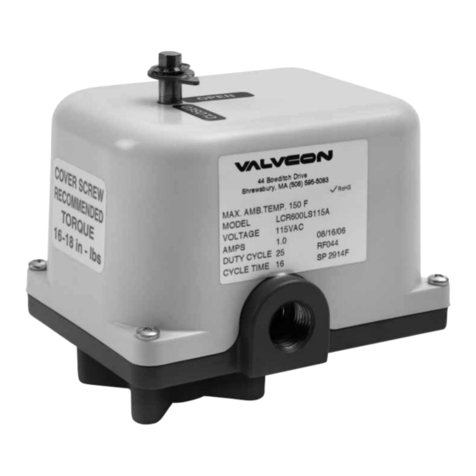
Metso
Metso Valvcon LCR Series Installation maintenance and operating instructions

TOHO
TOHO TTM-200 Series manual

Emerson
Emerson Level-Trol 2500 Series instruction manual
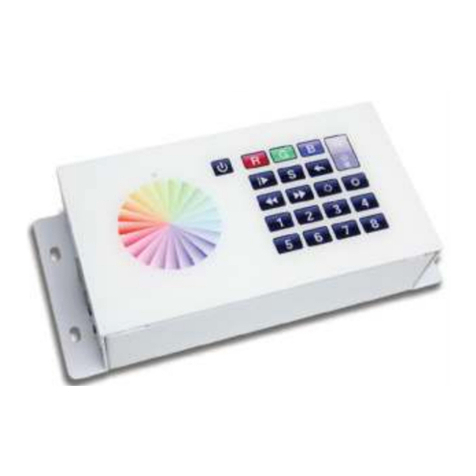
Martin
Martin DMX 8 Zone product manual
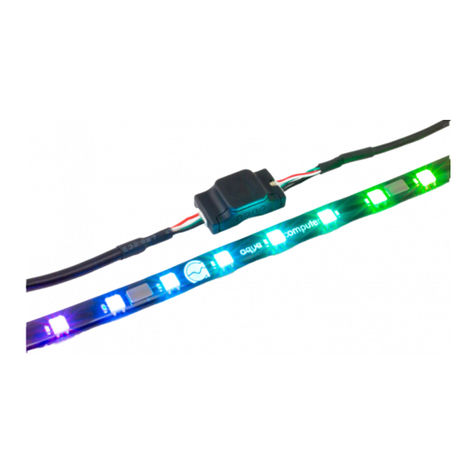
Aqua Computer
Aqua Computer farbwerk nano User and installation manual
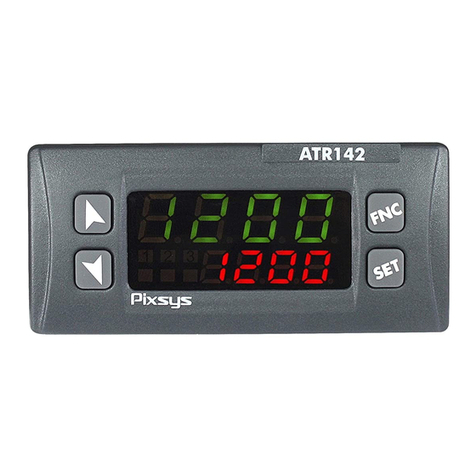
Pixsys
Pixsys ATR142-ABC user manual
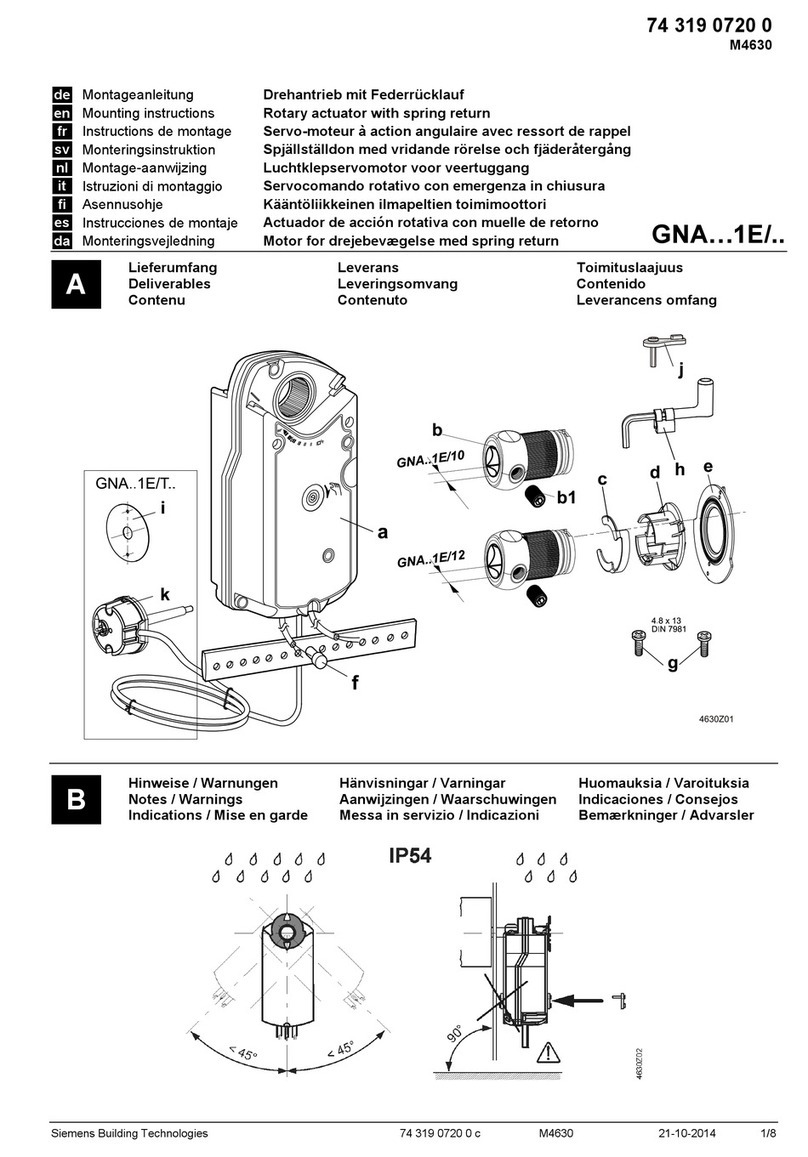
Siemens
Siemens GNA 1E Series Mounting instructions

Myron L
Myron L 750 II Series Operation manual
NXP Semiconductors
NXP Semiconductors LPC2917 Preliminary data sheet
